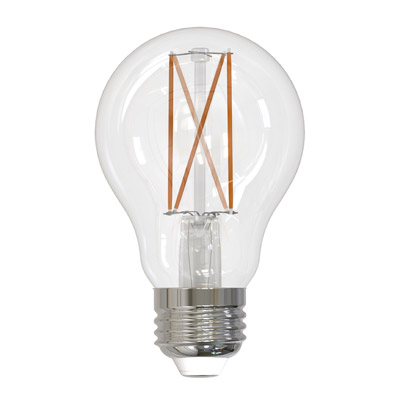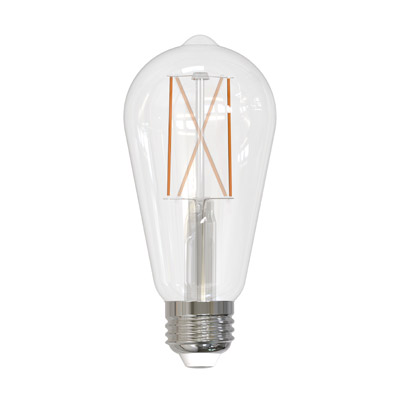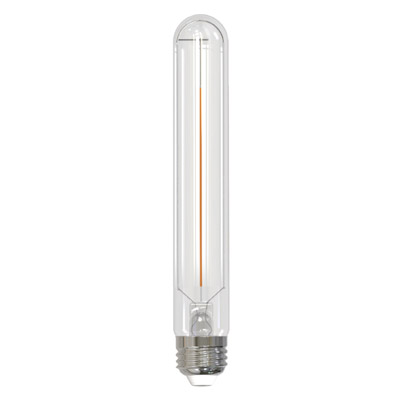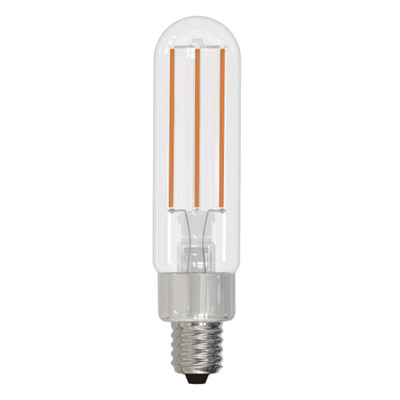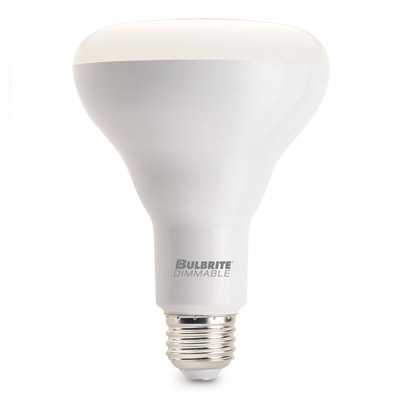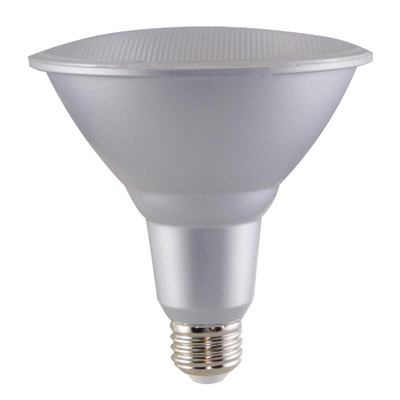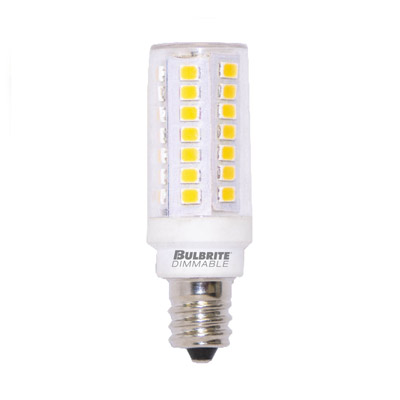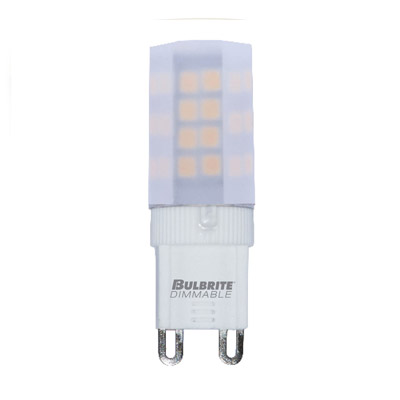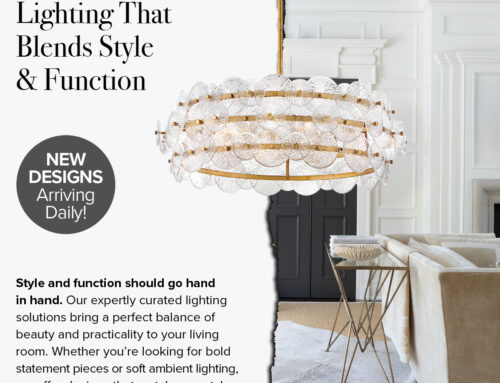
Choosing the Right Light Bulb in 2024
It’s a given that LED light bulbs are the best option for lighting your home; they are more efficient and can save you hundreds of dollars each year on utility costs. But how do you know what type of LED bulb to choose?
There are five essential things to take into account when choosing the right bulb:
- Bulb shape and size
- Bulb glass finish
- Lumens
- Correlated Color Temperature (CCT)
- Color Rendering Index (CRI)
Types of LED Bulbs
LED bulbs come in a variety of shapes and sizes of bulb and base. You must first figure out what type of bulb you are replacing.
We carry a full line of LED bulbs, always contact us if you are looking for a specific type. These are just some of the bulbs we have available.
Bulb Glass Finishes
For many bulb types, there are choices in the color and texture of the glass. Options often include Clear, Frosted, or Amber (sometimes called “Nostalgic”).

Lumens (Brightness)
To replace existing fixtures or bulbs, you need to understand the equivalence of wattage to lumens. Lumens measure the amount of light produced; watts measure the amount of energy required to light products. The more lumens in a light bulb, the brighter the light. Choosing the correct lumens is important to make sure you have the same brightness you need. Most packaging will show the equivalence from wattage to lumens.
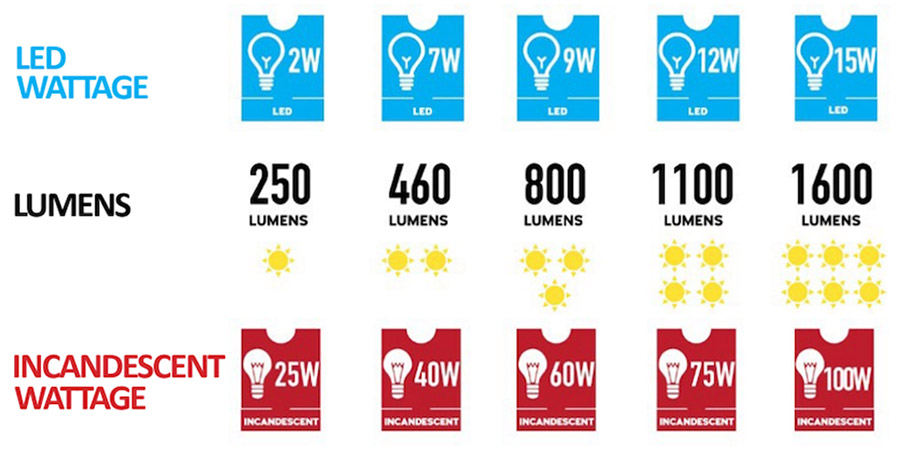
| LED Wattage | 2 Watts | 7 Watts | 9 Watts | 12 Watts | 15 Watts |
| Lumens | 250 Lumens | 460 Lumens | 800 Lumens | 1100 Lumens | 1600 Lumens |
| Incandescent Wattage | 25 Watts | 40 Watts | 60 Watts | 75 Watts | 100 Watts |
Correlated Color Temperature (CCT)
The color temperature of a bulb will create the mood in a room. LED color temperature defines the amount of pure white, yellow, red, and blue in a light. Color temperature is measured in degrees Kelvin. The lower you are on the scale, the warmer the light is. A “warm” color (similar to incandescent) is excellent for a family room or bedroom, and a “cool” color (similar to halogen) for a kitchen or work spaces.
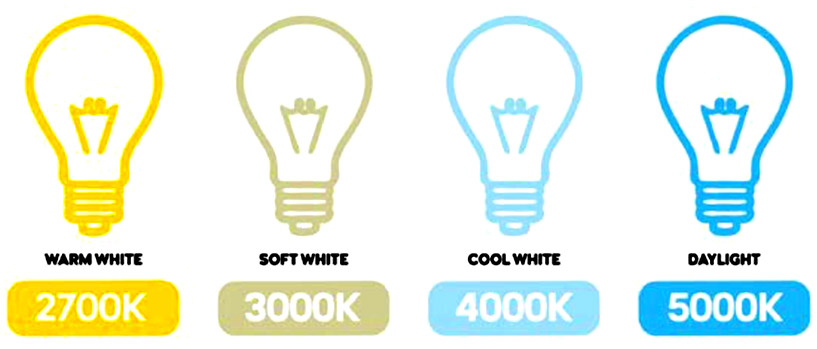
2700K = Warm White
3000K = Soft White
4000K = Cool White
5000K = Daylight
Color Rendering Index (CRI)
CRI is a measure of how well light sources render the colors of objects, materials, and skin tones and surfaces. The CRI measurement determines the ability to show object colors “realistically” or “naturally” compared to the source of incandescent light or daylight. It is rated on a scale from 1-100. The higher the CRI rating, the more accurately colors will be reproduced.
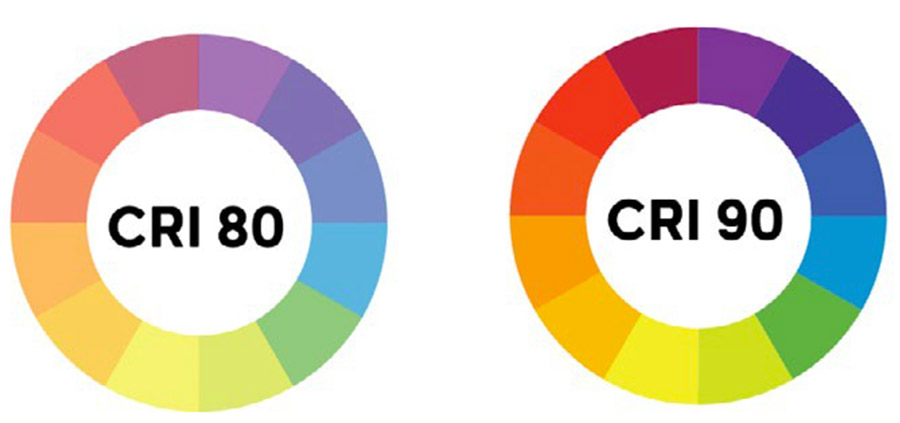
Choosing the correct light bulb for your space is important! We understand it can be difficult to find the right one…we are here to help! Contact us with any questions!


